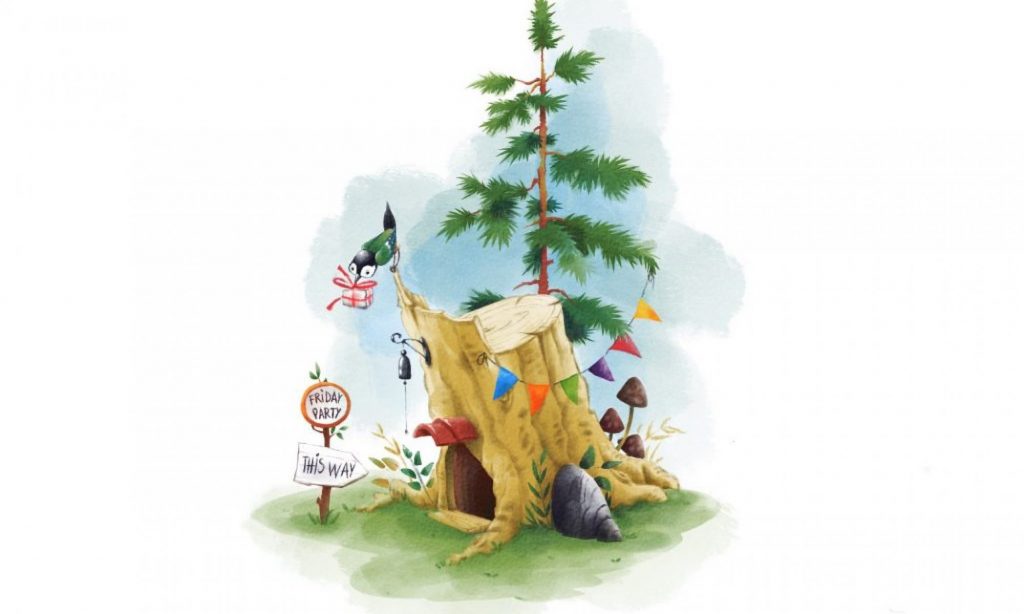What if… there are two kiddos, a Sis and a lil’ Brother and a long rainy day in early spring.

In one window looked two. One saw the rain and mud. Other – green foliage ligature, spring and sky is blue. In one window looked two.
–Omar Khayyám
The story going to be based on this quote.
Well, basically, I will show how two kids see the same surrounding- their backyard.
But, additionally, I want to show their relationship- what in the end, actually, a person who is right here beside you, can help you to overcome bad moods and get over this dull day.
I’m not sure is it going to be narrated or not, but definitely without dialogues—just sounds.
Firstly, I’m going to show that it is a rainy day: moody, low, grey sky, rain.
(probably) the quote will appear, then disappears. The camera moves down; we see the chimney, then the rooftop, tree of the left. Lower; windows, now a fence. And we got into the middle of someone’s backyard—that tree on the left, of the fence, just a dark silhouette. We see a handmade tyre swing. There is a football goal on the right and a ball. Maybe some toys here and there. Everything is wet in the centre of all this a large rain puddle. Rains constantly.
Next scene- we see the house (like you turn around). Not the whole house, a lower part- great window, the fence now on the right, hides around the right corner of the house. A silhouette in the window draws our attention. It’s not very clear, but we can say that it is a person, probably a kid, under a dark-coloured blanket that covers him from head to toes. And we see him in a bad mood- eyebrows to touch each other and are really close to the nose. His small mouth in the shape of an arc sits right under his nose. Beside him on the right a kite. Might be it is coloured but for now everything in that greyish mood, so we can say what colours are there.
Next scene- we are in the room, on a distance from the window. Now we see him from the back. It is a kids room. A camera lowered, so room and window look huge, there is no light inside, so the interior is dimmed.
A dark silhouette, half of the body(might be legs only) appears in front, a bit left, of us. The figure runs toward the window. Now in the light of the window, we see a girl. The camera is closer to them. We can see them clearly. She carried a sketchbook and a pack or just a couple of pencils(or crayons). She puts it on the windowsill and starts climbing on. She accidentally touches her brother with her leg. The boy turns to head her way, angry and pushes her with hand. Not like with real power, but sort of slightly, to show that he doesn’t want her here, but more like simply ’why you are here?’. Turns his head back immediately and pull his kite closer to himself.
By the way, now we can see the difference between siblings. While brother is in a sullen mood and covered in a greyish/dark blanket and has a narrowed eyes, sisters eyes are big and bright, as well her sweater and sock are very colourful.
Then the girl settled down, grabs pencil and paper and look at the boy smiling (shows that she don’t care about push, even don’t want to pay attention to it, or already forgot about it). Extreme close up to boys face, he sighs deeply and looks out of the window.
Now the camera shows what he sees- close up on raindrops patter over tyre swing, then it shows that puddle in the middle and mud around.
The camera still outside showing both a bit from a distance, but we pay more attention to a happy girls face. She’s now overlooking the backyard. I want to show the same points but with the difference! Sister sees the same tyre swing, but her attention is on the tiny green leaves on the tree’s branch. Then she sees a couple of crocuses on the edge of the puddle. And all the sudden through the small rain ray of light touches the flowers (spring and the sky is blue).
Camera switches back to our characters (from the outside). The girl immediately starts sketching/doodling something in her block with enthusiasm. She then happy touches her brother with hand, he turns to head a bit furious, but she shows him her drawing. And now we see his face changes to smile(slowly), and then swiftly up to his legs throwing down blanket, full big smile over his face. He began to gesticulating, showing something to Sis. She follows him with happiness, immediately draws something on paper. She shows him, he sits beside her on knees and nods quickly, and they start laughing (we don’t hear that laugh).
Now we see changes in the boy. Not only a big smile, fully opened eyes but after he threw down his blanket, we see colourful sweatshirt and pants and socks.
Camera same position. It stops raining! Kids like freezes for a second, then shortly they off from the window, so we see only sketch block (some lines on the paper surface) and pencils (the boy took the kite). After a second, we hear laughing sounds and footsteps outside. We don’t see kids, just sounds. The camera slowly started going up, over the roof, the see clear blue sky. Sounds- laugh and bids are singing.
END
(if not at the beginning of the film show quote, so it will appears now)
Credits.

